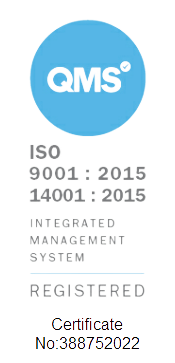Change Management is a tricky thing. You balance the needs of the client with the restrictions of their organisation.
Defining the desired outcome is key, yet often overlooked.
According to Mckinsey, "70% of change programs fail to achieve their goals, largely due to employee resistance and lack of management support.”
Change management is a uniquely important discipline for organisations of all size. For companies operating at scale though, something as simple as a new configuration for its support software can have unintended consequences across multiple teams, functions, and geographies. It’s important for organizations to be able to quickly innovate and adopt new features and solutions, while not creating chaos in the process.
The good news is that with some upfront planning and the right tools in place, companies don’t need to be afraid of change. When done properly, change is a positive experience for companies and customers alike. Here are a few tips to help any organisation conquer change:
Involve the right people
When it’s time to actually embark on a change management journey, it’s important for companies to understand the impact that the process will have on the people in the organisation.
This includes involving the right groups early, getting buy-in on changes with key stakeholders, defining a clear plan for communicating change to the organisation, and having a roadmap to onboard the organisation to new workflows.
Ask the hard questions upfront
The first step for executing a change of any scale within an organisation is a clear-eyed assessment of where the company is today, where it wants to be in the future, and an agreed-upon set of goals and objectives against which to measure its progress.
Before embarking on any changes, the company should audit its current solution and customer experience. It’s important to understand how and why the current solution was implemented, what technical trade-offs were made, what worked well, and the challenges that are prompting the change to begin with.
This is also the right time to assess what suppliers a company is using and begin working on a plan for how to roll out changes to the organization once implemented.
Consider a testing environment
Most mid-to-large enterprises have unique set-ups and custom configurations for their internal systems. With so many variables and internal dependencies, it can be easy to wreak havoc on even the most well-oiled of machines when testing and implementing new solutions.
One of the most powerful tools for companies looking for a safe, efficient way to make changes to their workflows is an environment dedicated to testing new workflows and solutions.
A testing environment (or sandbox) separate from the live environment where companies can replicate part or all of their systems, including automation, metadata, and customer information. Sandboxes allow companies to experiment with changes to their system in a controlled environment before exposing changes to customers or the broader organization.
Working in a sandbox removes much of the risk of implementing changes to existing systems. Sandboxes are an ideal way to experiment and innovate while minimising disruptions and operational risk to the current production environment.
Sandboxes also allow companies to test their changes before rolling them out. Since sandboxes replicate a company’s actual live environment, they allow developers to understand everything about what will happen when the changes are pushed live.
Communication
This is key in particular to internal buy-in.
The first step is to develop a written communication plan to ensure that all of the following occur within your change management process. Each is important when you are asking people to change their former ways of doing things.
- Communicate consistently, frequently, and through multiple channels, including speaking, writing, video, training, focus groups, bulletin boards, intranets, and more about the change.
- Communicate all that is known about the changes, as quickly as the information is available. Make clear that your bias is toward instant communication, so some of the details may change at a later date.
- Allow time for people to ask questions, request clarification, and provide input.
- Communicate how these changes will affect them personally. If you don’t help with this process, people will make up their own stories, usually more negative than the truth.
- Communicate the reasons for the changes in such a way that people understand the context, the purpose, and the need.
- Provide answers to questions only if you know the answer.
- Publicly review the measurements that are in place to chart progress in the change management and change efforts.
Training & Workflow
Alongside communication, consideration must be put in place for training where appropriate, as a source of frustration would manifest itself from users’ inability to make the most of the new workflow and tools.
Certainly, consideration should be made in bringing in 3rd party companies that can help with this process, dependent on the change itself, and whether resources can be dedicated internally to these activities.
Conclusion
A disciplined approach to change management can help companies of all sizes tackle even the most complex transitions with confidence.
By taking the time to align its people, processes, and technology with its business objectives, organisations can increase the adoption of new workflows and solutions, leading to happy internal stakeholders and customers alike.







